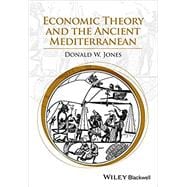Economic Theory and the Ancient Mediterranean presents a comprehensive introduction to the application of contemporary economic theory to the ancient societies of the Mediterranean Sea from the period of 5000 BCE to 400 CE.
- Offers an accessible presentation of modern economic theory and its relationships to ancient societies
- Presents innovative expositions and applications of economic theory to issues in antiquity not often found in the literature
- Features insightful discussions of the relevance of contemporary economic models to various situations in antiquity
- Written for a broad range of scholars of ancient Mediterranean regions, including archaeologists, ancient historians, and philologists








